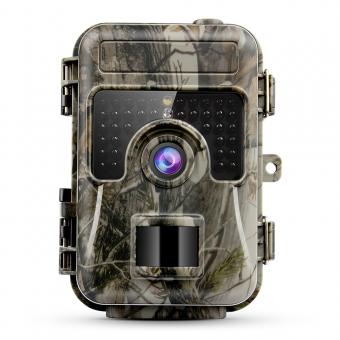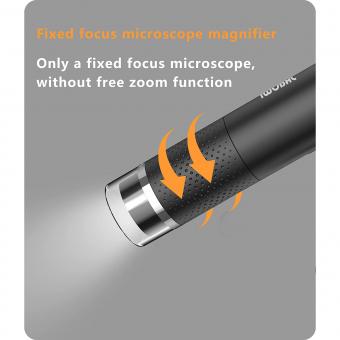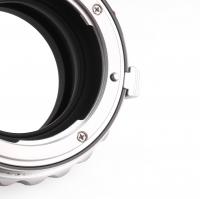Are All Fungi Microscopic ?
No, not all fungi are microscopic. While many fungi are indeed microscopic, there are also many species of fungi that are visible to the naked eye. For example, mushrooms, which are the fruiting bodies of certain types of fungi, can range in size from just a few millimeters to several feet in diameter. Other types of fungi, such as molds and yeasts, can also be visible without the aid of a microscope. However, it is worth noting that the majority of fungal species are indeed microscopic, and can only be seen with the help of a microscope or other magnifying device.
1、 Macroscopic fungi
No, not all fungi are microscopic. While many fungi are indeed microscopic, there are also macroscopic fungi that can be seen with the naked eye. Macroscopic fungi are commonly referred to as mushrooms, toadstools, or bracket fungi. These fungi can grow to be quite large, with some species reaching heights of several feet.
The distinction between microscopic and macroscopic fungi is not always clear-cut, as some fungi can exist in both forms depending on their life cycle stage or environmental conditions. For example, the fungus that causes athlete's foot is typically microscopic, but can sometimes form macroscopic colonies on the skin.
Recent research has also revealed that some fungi previously thought to be microscopic may actually have macroscopic forms. For example, a study published in 2018 found that a species of yeast commonly found in soil and water can form macroscopic colonies resembling mushrooms under certain conditions.
Overall, while many fungi are indeed microscopic, there are also macroscopic fungi that play important roles in ecosystems and human cultures.
2、 Microscopic fungi
Microscopic fungi are a diverse group of organisms that are characterized by their small size and ability to reproduce through spores. While many fungi are indeed microscopic, not all fungi fall into this category. In fact, some fungi can grow to be quite large, such as the giant puffball mushroom, which can reach sizes of up to three feet in diameter.
It is important to note that the term "microscopic fungi" is somewhat outdated and has been replaced by the more accurate term "microfungi". This is because not all fungi that are small enough to require a microscope to see are necessarily microscopic in nature. For example, some fungi may be small in size but still visible to the naked eye.
Furthermore, recent research has shown that there are many more species of fungi than previously thought, and many of these species have yet to be fully studied or classified. As a result, our understanding of the diversity of fungi is constantly evolving, and it is likely that new discoveries will continue to challenge our current understanding of these fascinating organisms.
In summary, while many fungi are indeed microscopic, not all fungi fall into this category. The term "microscopic fungi" is somewhat outdated and has been replaced by the more accurate term "microfungi". Our understanding of the diversity of fungi is constantly evolving, and it is likely that new discoveries will continue to challenge our current understanding of these fascinating organisms.
3、 Dimorphic fungi
Not all fungi are microscopic. In fact, some fungi can be seen with the naked eye, such as mushrooms and truffles. However, the size of fungi can vary greatly, with some species being microscopic and others being macroscopic.
Dimorphic fungi are a type of fungi that can exist in two different forms depending on the environmental conditions. They can exist as either a yeast-like form or a filamentous form. Some examples of dimorphic fungi include Histoplasma capsulatum, Blastomyces dermatitidis, and Coccidioides immitis.
While some dimorphic fungi can be microscopic, others can be macroscopic. For example, Histoplasma capsulatum can be found in soil contaminated with bird or bat droppings and can cause respiratory infections in humans. On the other hand, Blastomyces dermatitidis can cause a skin infection known as blastomycosis and can form large, visible colonies on culture plates.
It is important to note that the classification of fungi as microscopic or macroscopic is not always clear-cut. Some fungi may be considered microscopic because they are too small to be seen with the naked eye, but can still be visible under a microscope. Additionally, advances in imaging technology have allowed for the visualization of fungi in new ways, blurring the line between microscopic and macroscopic.
4、 Yeasts
No, not all fungi are microscopic. Yeasts, which are a type of fungi, are typically microscopic, but there are many other types of fungi that can be seen with the naked eye. For example, mushrooms, which are the fruiting bodies of certain types of fungi, can be quite large and visible. Some mushrooms can grow up to several feet tall and weigh several pounds.
In addition to mushrooms, there are many other types of macroscopic fungi, including puffballs, truffles, and bracket fungi. These fungi play important roles in ecosystems, such as breaking down dead plant material and providing food for animals.
It is worth noting that the classification of fungi is constantly evolving, and there is ongoing debate among scientists about how to define and categorize different types of fungi. Some recent research has suggested that the traditional classification of fungi based on physical characteristics may not accurately reflect the evolutionary relationships between different species. As a result, there is ongoing research into the genetic and molecular characteristics of fungi, which may lead to new insights into their diversity and classification.
























There are no comments for this blog.